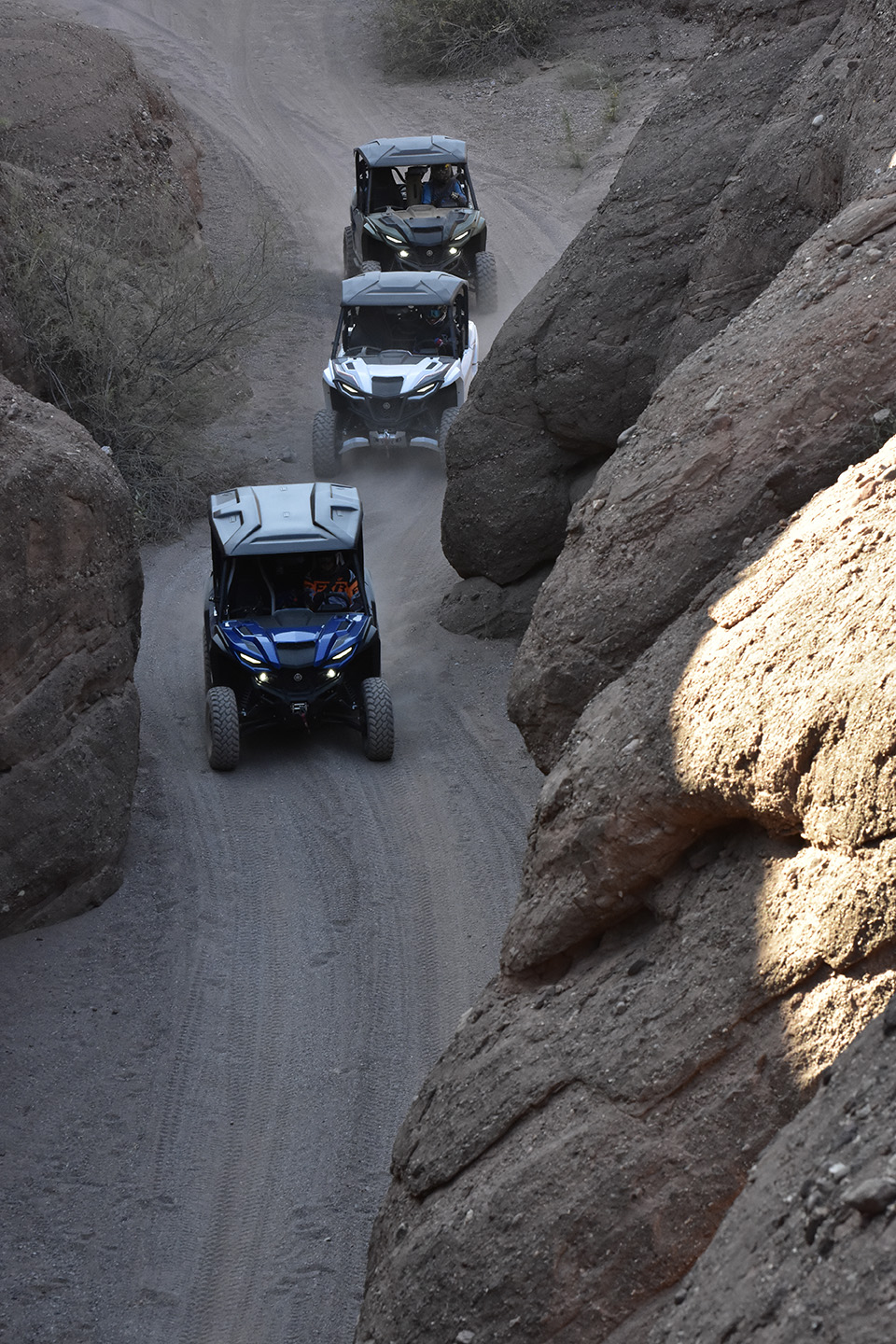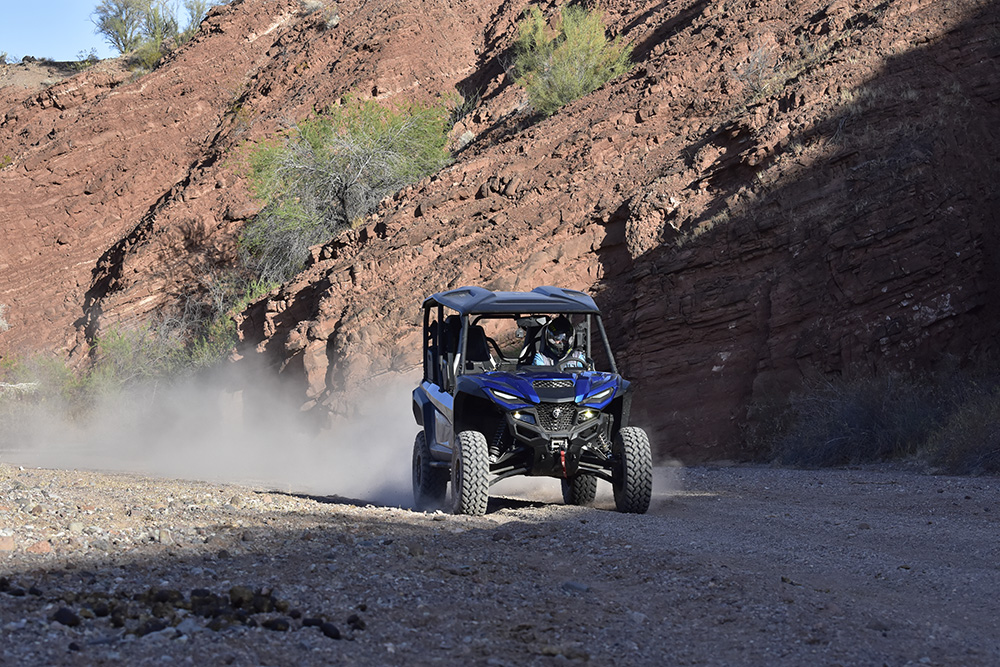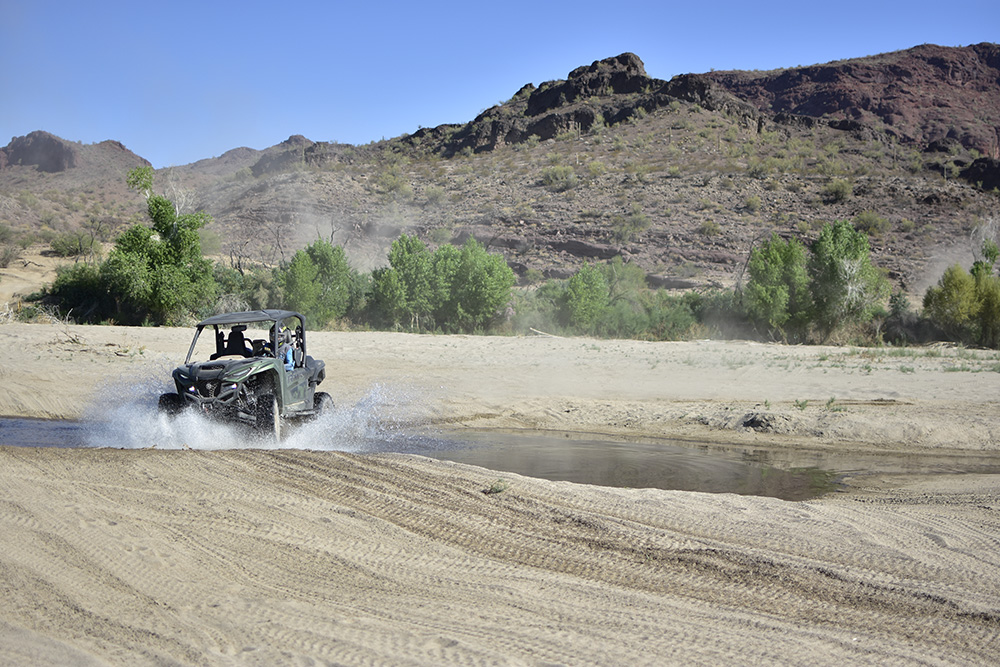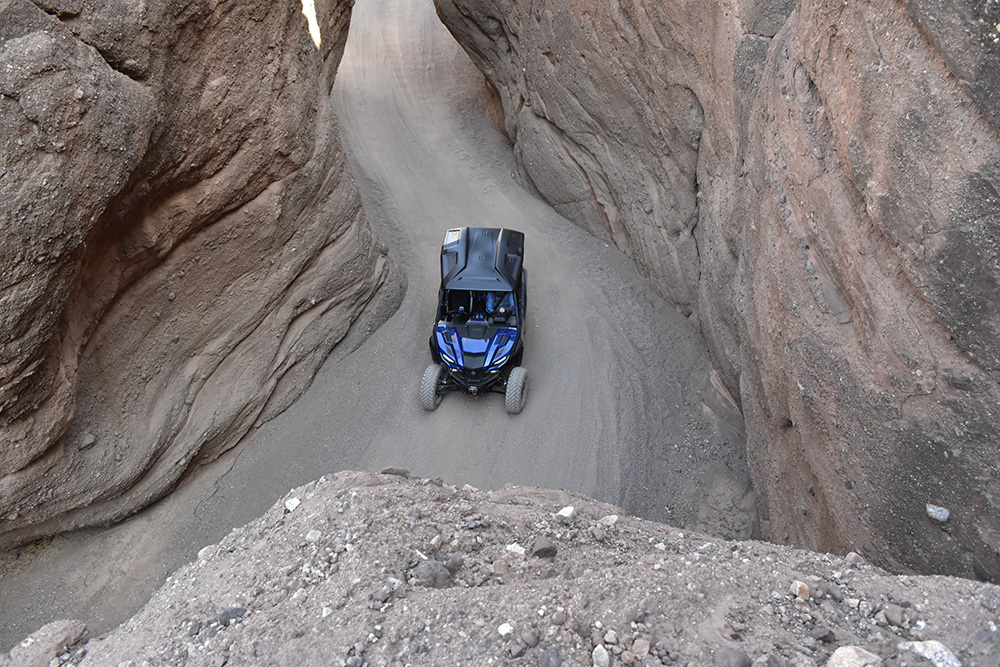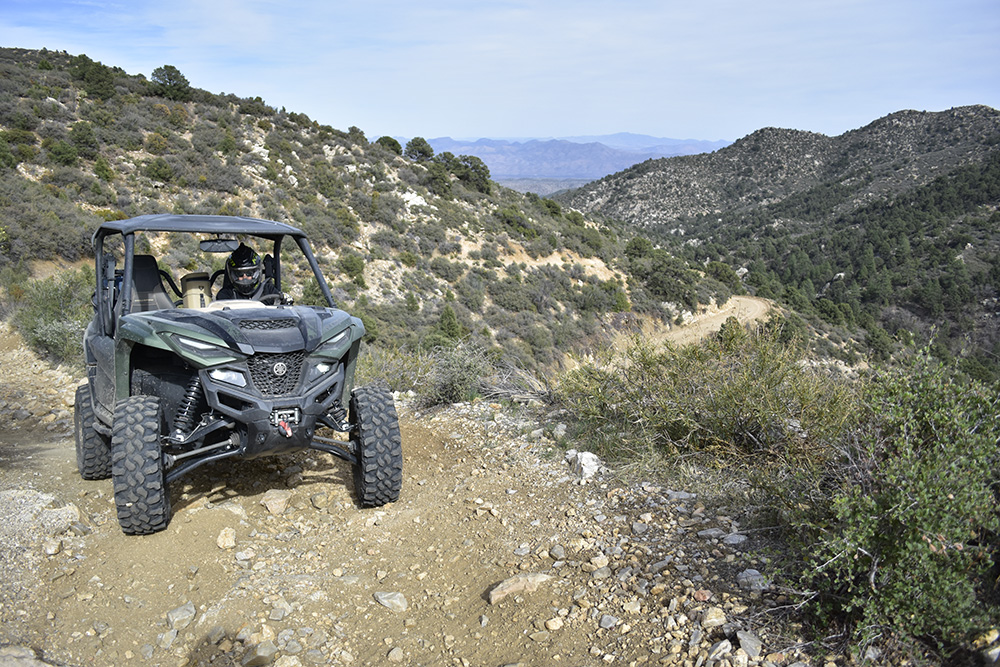Finding inner peace with a 320-mile excursion in Yamaha’s beloved RMAX 1000. We take the Yamaha RMAX on the Arizona Peace Trail.
Yamaha RMAX on the Arizona Peace Trail
Story/Photos: Cody Hooper
The Arizona desert can be a cruel, unforgiving place. Featuring thousands of square miles of sprawling rocky landscapes with temperatures reaching well over 120 degrees in the summer months, it is a place thought uninhabitable by many. For those in the off-road community, Arizona is a dream destination: mountainous landscapes lead into massive low-desert valleys, with lakes miraculously placed like mirages in the basin of the sandy desert floor.
Also, see all of the Best Off-Road Trails in Arizona.
Lately, we have been spending quite a bit of seat time in Yamaha’s new Wolverine RMAX 1000. First tested in our January/February 2021 Issue, the RMAX 1000 was an instant hit with all of our testers. From hauling camera gear to weekend chores, trips up the rocky canyons of Jawbone to fire-road rallies in California City, the RMAX delivers the goods. This made for an easy choice when Yamaha rang our offices and asked if we were up for a three-day excursion across the Arizona backcountry – “Yes” was our only response!
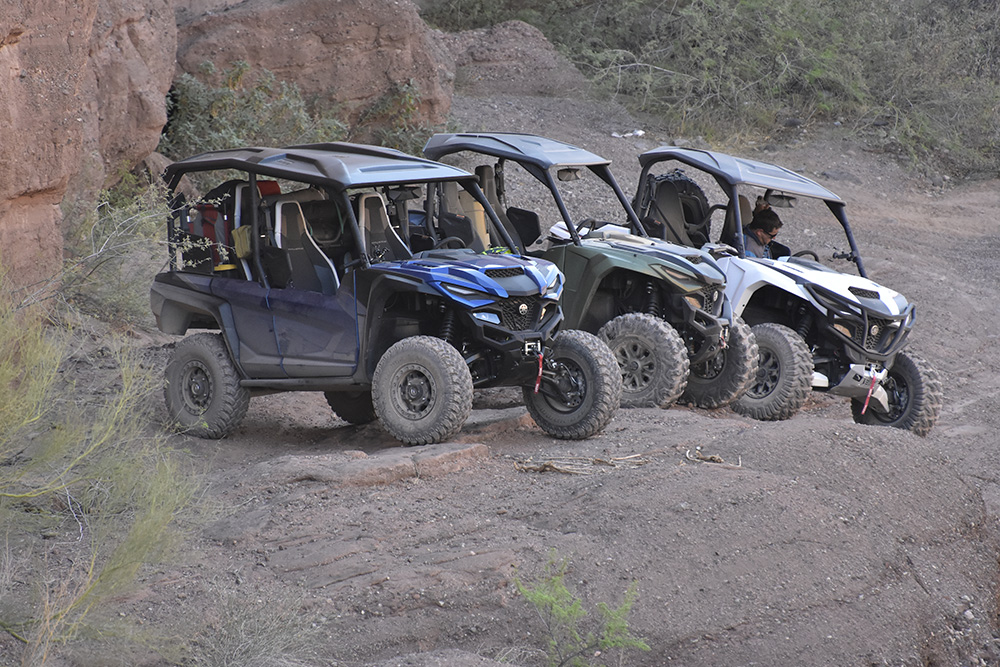
We began our trip by meeting for a quick dinner and briefing the evening before departure in Lake Havasu City, Arizona. There, we met our trail guide, Casey Cordeiro. Casey had been carefully mapping and prerunning this 300+ mile trail loop for months, choosing the optimal lines across the Arizona wilderness for maximum fun (and sightseeing).
At 8 AM Tuesday morning, we met at base camp, which was situated at the Mohave Trail head. There, we began loading three Yamaha RMAX 1000 units with all our food, water, camera gear, clothing, and camping supplies necessary for the trip. The first unit, which was most heavily loaded down, was a 2021 RMAX 4 LE with the rear seats in the stowed position. Once the seats are moved forward and out of the way, the cargo area of the RMAX 4 opens up into a massive space. It was large enough to fit a massive amount of gear, as shown by the checklist image below.
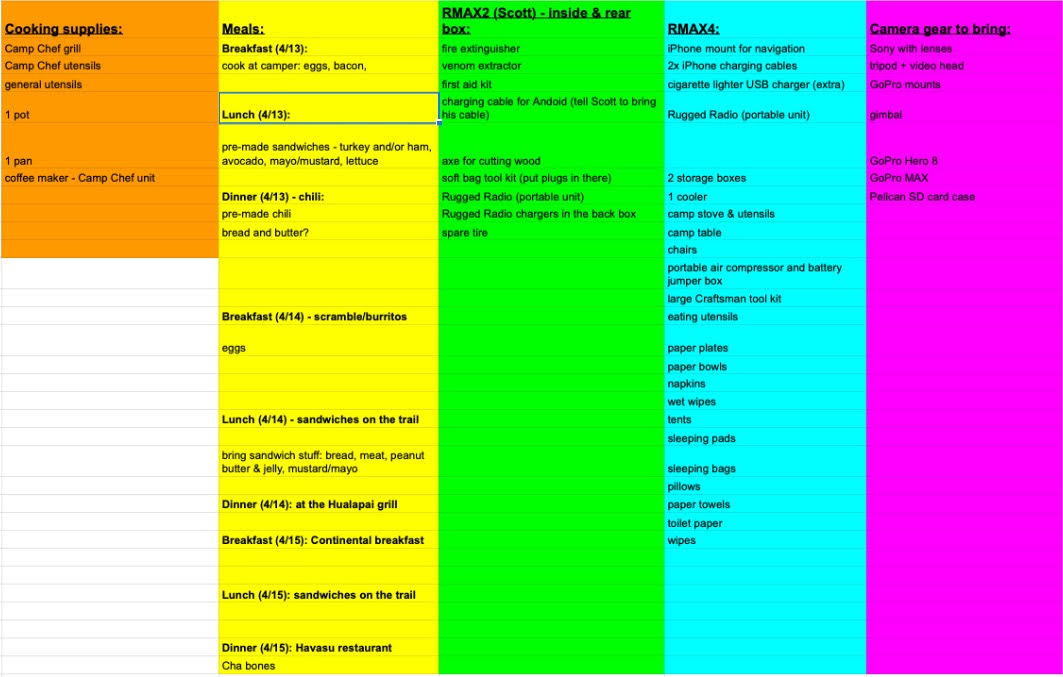
The other two RMAX units that came on our trip were two-seat models. One was a base RMAX that had been upgraded with various Yamaha accessories and the Yamaha D-mode throttle controller. The other was an XTR model, and all three had 30-inch tires mounted so the spare tires would work for any car in the group.
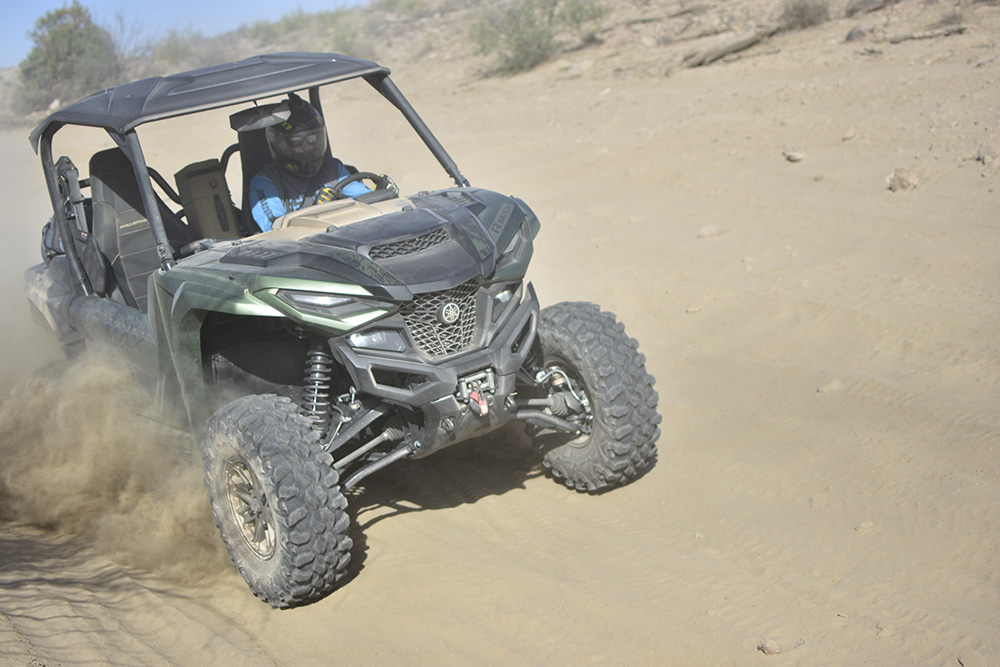
Setting off, we headed southeast towards our first stop, a place aptly named “Window Rock”- a formation carved by wind and desert grit that looks like it belongs under the ocean. After a quick hike to the top to stretch our legs, we hopped back in the RMAX units for a rip out to Dollar Cabin, also known as Founder’s Cabin. The trail sections that linked these two destinations took us across wide-open sandwashes, tight two-track, and eventually deep into a cove in one of the main riverbeds. We stopped at Dollar Cabin to have lunch, tag our own souvenir dollar for the trip, and chatted with some other riders that were there from Michigan, enjoying a break from the snow back home.
With the units loaded back up, we set off for two more mining cabin destinations that day- McGuffie Cabin, which is about 25 miles from the nearest highway as the crow flies, and a remote hunting cabin just off of the coast of Alamo Lake. McGuffie’s cabin sits nestled in a rocky canyon in wild burro country, positioned Southeast of an old copper, gold, and silver mine. It would have been quite the accomplishment to trek all of the materials to this spot in order to build the cabin, especially since it was built back around the 1960s.
Towards the evening of our first day on the trail, with about 80 miles on the trip meter, we made it to our riverbed camp spot along Alamo Lake. Here, we parked the RMAX units for the night, and proceeded to set up camp for our overnight stay. We brought along gear from the outdoor gurus at Klymit and Camp Chef to make things a little easier.
Klymit is a high-end adventure gear company that supplies serious camping gear for ourdoor enthusiasts that are concerned with their gear weight and size. The Maxfield tents we took on our trip are pricey, but they are incredibly strong and fold up into a surprisingly small, lightweight package. We paired the Maxfield tent with Klymit’s Static V inflatable sleeping pad, KSB 15 sleeping bag and Drift Camp memory foam pillow. This combination was extremely comfortable in the mild Arizona weather, allowing us to sleep with the rain fly left off to enjoy a sky full of beautiful, bright stars. Look for more on our Klymit camping gear in a future issue!
The next morning, we awoke to the sound of wild burros braying near the tents, signaling it was time to pack up and cook breakfast. Our guide broke out a full Camp Chef Sherpa collapsible table and organizer, complete with a grill and griddle. After bacon, eggs and coffee trailside, we loaded our camping gear back into the RMAX units and headed off for day two on the trail, which would be our longest mileage day. We got on the trail early and headed to the shores of Alamo Lake for a pre-planned fuel stop at Wayside Oasis RV park, which was only a 15 or so mile cruise from our camping spot.
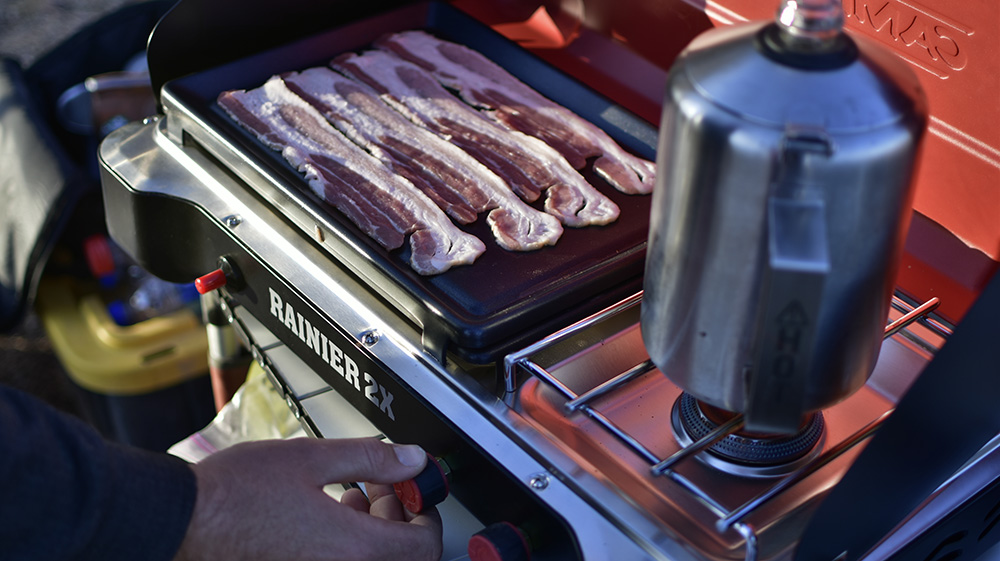

Day two had us heading for McCracken Mine, a massive operation founded in 1874 that still houses a ton of inactive mining equipment and lodging. We traversed over 130 miles of trail on day two, ranging from tight desert sand wash to shale hill climbs and everything in between. One of the highlights from this trail day was the quiet, desolate stop we made in Signal Ghost town, just outside of Wikieup, Arizona. Here, we found a cemetery, multiple mining cabins and old building foundations, and some active properties where relatives of those who mined here long ago still reside.
After exploring the washes and desert basins near Signal and making the climb to McCracken Mine, we filled up the RMAX tanks in Wikieup and headed up in elevation for our second night stay, this time at the Hualapai Mountain Lodge. We were greeted by one of the longest, smoothest graded-road climbs I have ever seen, climbing 4,000+ feet to the lodge up in the hills. Here, we got our first big weather swing and scenery change, as the yucca and cactus-filled basins slowly turned to pine trees and conifers. The last few miles of trail before the lodge were spectacular, filled with rocky, cliffside hill climbs that snaked up the side of the mountain. The RMAX really shines here, as no amount of articulation or off-camber crawling seemed to phase the big Wolverine.
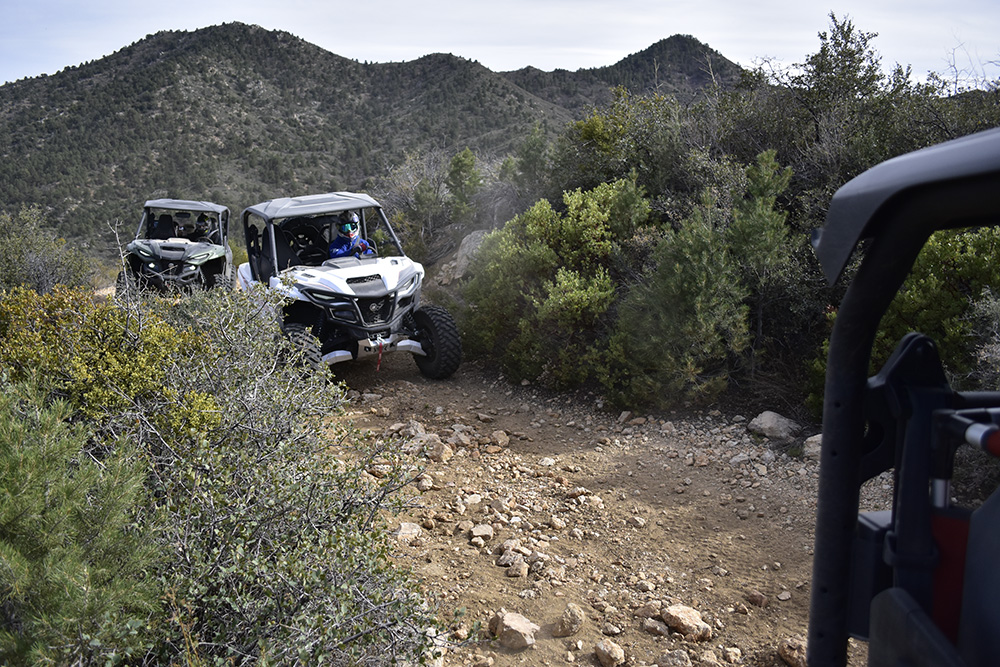
We ended day two with a fantastic dinner, a much-welcomed shower, and a good night’s sleep at the Hualapai Mountain Lodge. This spot is ATV/UTV friendly, but they do not have a gas pump, so bringing your own fuel is recommended. After filling up the RMAX units one last time, we began our third and final day, a 110-mile stretch back to base camp on a single tank of fuel.
We started the morning off with a climb through the trees to the top of an endless ridgeline road, taking us along the top of the Hualapai mountains towards Boriana Mine. This retired mine site is massive, sprawling up and down levels of the mountainsides with plenty of old equipment, cars, and tailings to explore.
The Boriana Mine was one of the largest tungsten-producing mines in the early 1900s, and operated up until around 1980 when it succumbed to old age and lack of new investment. Many of the old rigging is still in place, offering lots to see and learn here. Upon setting off from Boriana Mine, we made our way down the valley center towards Cedar, Arizona, where we would make our final mine stop on the trip.
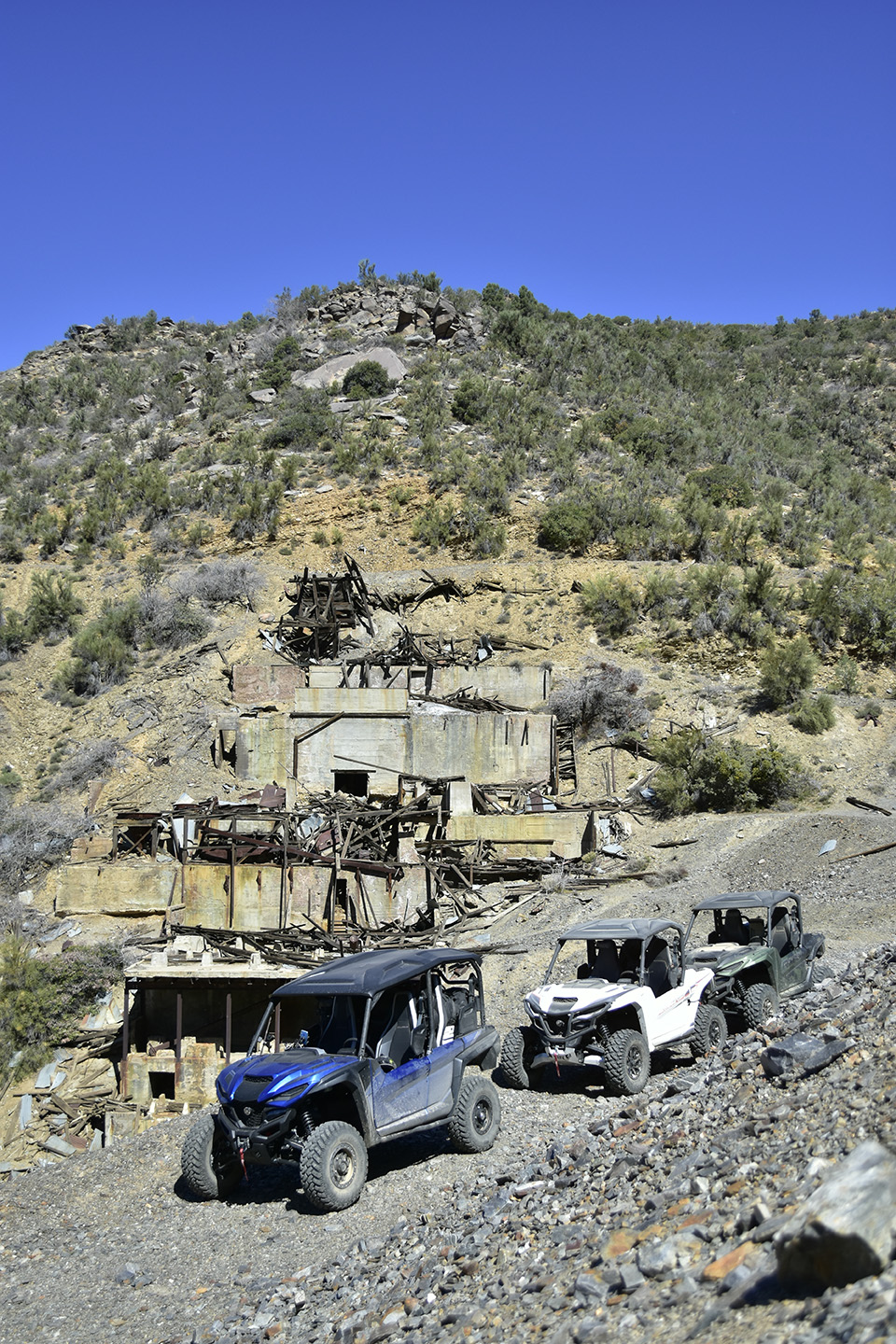
The final trail day took us across some of the most scenic parts of our trip- large rock formations that are reminiscent of the Grand Canyon lined both sides of the trail as we blazed through marvelous sand wash and mountain road trails. The RMAX units did not skip a beat the entire trip, bringing us back to base camp and rounding out our 317.5 mile round-trip without so much as a flat tire.
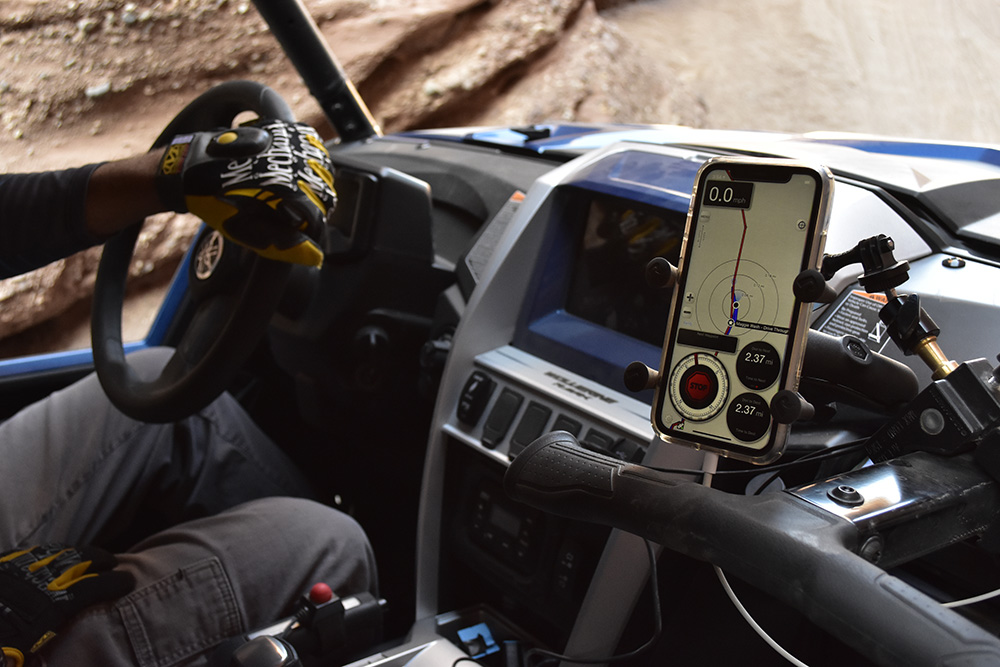
We learned a lot about Yamaha’s new RMAX 2 and 4 over our 300+ mile journey in just three short days, and our initial review opinions have only been made stronger with more seat time. The RMAX is a UTV built to tackle anything you can throw at it, while keeping its occupants comfortable, safe, and smiling. Plentiful power, plush suspension, and legendary durability come together to produce one of our favorite UTVs of this year, and one that should be on every adventurer’s wishlist. Yamaha installs a badge on the center console of the RMAX that reads “Proven Off-Road”, and it earned the right on our journey. No matter what the trail throws at you, the RMAX will take you to some amazing places, allowing you to Realize Your Adventure in your own way.
